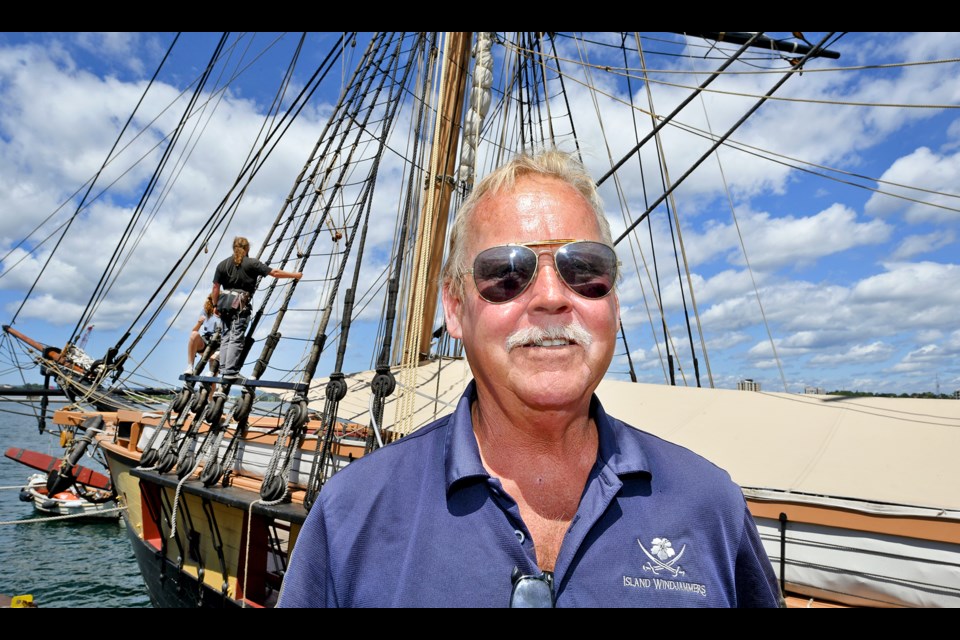“We have met the enemy and they are ours.”
Those words by Commodore Oliver Hazard Perry announced the Sept. 10, 1813, defeat of a British fleet on Lake Erie. It was the War of 1812, and the English saw an opportunity to reclaim a presence against a nation that broke away from the Crown 30 years earlier.
The young United States craved to expand West. The British, seeking to check the rebel upstart, formed powerful alliances with Native American tribes consolidated by a born leader, Tecumseh. British forces and their Native allies took Chicago, Fort Mackinac, and Detroit.
But within a month, British plans would be in shambles. Tecumseh’s dream of Native unity would die with him in a southern Ontario land battle. The United States would be unshackled to expand west unfettered.
And this all turned on Perry’s victory on a second flagship of the day’s battle - the first one was shot out from under him - built with Pennsylvania timbers on the shores of Lake Erie – the USS Niagara.
Some of the planks from that historic 1812 ship were in Sault Ste. Marie last week, in the form of an exacting replica of the USS Niagara. But instead of raking fire on an enemy, today’s version provides hundreds of students an experience of sailing and maintaining a ship that was state of the art 20 years before maritime steam engines.
The Niagara’s captain on this trip is John Beebe-Center. His crew is mainly comprised of 30 high school students from Erie, Penn. He has kept them busy on this trip to Two Harbors, Minn. The next morning, July 31, the Niagara will lock through the MacArthur to cross Lake Superior.
“We left Cleveland last Monday (July 26), sailed Lake Erie past Detroit and up Lake St. Clair with a stop in Algonac, and then up Lake Huron with a stop in Alpena,” said Beebe-Center. “We arrived in the Soo last night (July 29) to lock up tomorrow for a run across Superior in time for the Two Harbors Tall Ship Festival on August 4.”
For Beebe-Center, it’s good to have student sailors again. This is the first year of educational cruises after two years of Covid disruption.
“The kids are getting all the sheets (lines), rigging, and sails in shape after being in storage for 24 months,” he said.
The Niagara has all manner of rigging and sails to accommodate the seemingly infinite combination of winds on open water.
“This is a crucial aspect of keeping the Niagara alive,” he said. “This kind of ship requires human labor to keep it tuned. In an age when sail is dominated by pleasure boats, Niagara offers a glimpse into a lost age to a whole new generation.”
Without this, Beebe-Center is convinced that the Niagara, in the form as it originally existed, would die. This illustrates a subtlety between a museum ship and a working historic replica.
“Museum ships see tens of thousands more people in annual traffic,” he pointed out. “But its staff are historical interpreters and maintenance caretakers. On a sailing exhibit, sailors maintain a working machine. The downside is that fewer people get to experience it this way. Outreach advantages between a museum ship and working replica require a tradeoff.”
Today’s USS Niagara has amazing provenance. The original Niagara was sunk in the cold waters of Lake Erie after service. Its hulk was raised in 1913 and somewhat restored to sailing condition for a War of 1812 centennial exhibition. Efforts toward a fuller restoration foundered in the years after the Depression and World War Two.
It wasn’t until 1988 that full restoration was finally realized. By then, most of the boat’s original oak was lost to dry rot. Much had been taken by souvenir hunters. But a handful of original planks still grace the current Niagara’s waterline.
Today the Niagara belongs to the state of Pennsylvania and is operated by the nonprofit Flagship Niagara League, which makes it a mission to offer students of all ages a glimpse of what warships were like in Age of Sail.
Specifically, a warship that was a hinge of fate in the ambitions of a young country, one autumn afternoon 209 years ago on western Lake Erie.



